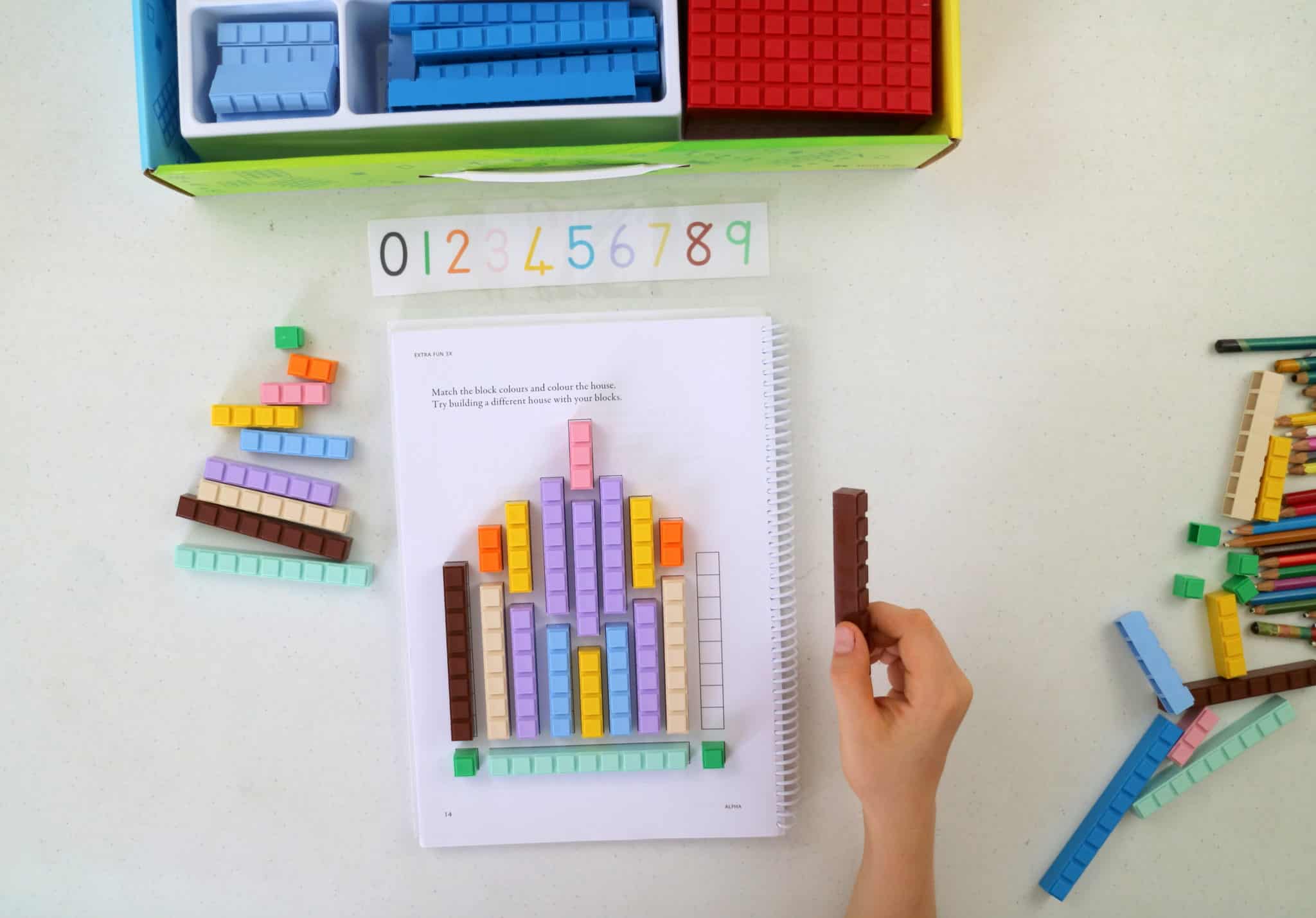
What are the most popular homeschooling styles?
There are many types of homeschooling and home education that parents and families across Australia are using to educate their kids. Your child's education completely depends on you, your beliefs and values and how you want to include important subjects into their life - and when (in some states, government reporting is needed).
And there are more styles and methods of homeschooling and education that are being used day by day! #wordschooling #travelschooling and #unschooling have become popular across social media platforms as parents share the way they are raising their kids.
However, the following 6 homeschooling methods are the most popular methods:
How do you choose your homeschooling style?
When researching homeschooling methods and styles, think about which features are best aligned with what you would like to teach your kids. Is academic performance a high priority for you? Or are you more interested in how your kids relate to the world and become strong, independent adults? Or are you looking for a healthy mix of both?
When making a decision, consider the following:
- Your particular belief
- Your lifestyle and family needs
- The individual needs of your child
- The learning style that your child needs*
- Your goals for homeschooling
* Choosing an approach that works with your child's learning style is perhaps the ultimate key to success. If your child is a kinaesthetic, hands-on learner and you are trying to make them memorise facts on a sheet of paper, it wont' work!
It’s important to understand that you don’t have to stick with one particular method or philosophy. Cherry picking aspects from each of the main approaches and combining these with state requirements and your own worldview is often a wonderful way to create balance.

What are the state requirements for homeschooling?
One of the biggest benefits of homeschooling is its flexibility in terms of methods and approach. Yes, every state has educational outcomes, often in the form of core subjects or requirements, which must be met, however the teaching and learning style you choose, as well as the content and resources you utilise, are all up to you.
To have a better idea of which method you align with, it's important to check out your current state requirements for homeschooling and if there is any reporting that is needed when you are educating your kids. This will make your job easier in the long run if you can pencil in reporting requirements before getting started.
The 8 Homeschooling Styles and Methods
Let's dive right in. As you read the descriptions of each homeschooling style, see which method aligns with your beliefs and what you are wanting to create for your family. You are wanting the best for your child and their education and understandably so!
1. Traditional homeschooling (school at home)
This approach tends to be based predominantly on the state or national curriculum, and follows a classroom-at-home model. Textbooks and worksheets comprise the majority of learning resources, with flexibility around how, when and where work takes place. This approach often works best for families looking for a distance education solution or with other commitments which preclude traditional schooling.

2. Montessori
Montessori takes a humanistic, individual approach to each student, and advocates for free movement and interest-based activities within larger time blocks (up to three hours). The role of the teacher is to gently guide students rather than instruct them directly, letting them learn for themselves from a range of sensory and tactile objects and experiences.
The Montessori method allows children to work at their own pace, making it especially effective for students with special needs (including those classified as gifted and talented).
Rudolf Steiner (who founded the Steiner schools across the world) is another popular way to homeschool and school your kids. It is similar to the Montessori method and is hands-on, engaging and encourages the creative side of your child's inquisitive nature.
3. Charlotte Mason
The Charlotte Mason method is based on the idea that children should be educated holistically, rather than just focusing on their mind. This involves imparting good ideas as a parent or carer, cultivating good habits from an early age and giving children “living thoughts and ideas, not just dry facts”.
Charlotte Mason students learn via Living Books, which are books which are written in narrative or story form to bring the content to life. They’re then required to retell or narrate what they’ve learned in order to consolidate it in their own minds. Charlotte Mason is based on christian principles and prioritises time outdoors and learning for the sake of learning.
4. Unschooling
Unschooling is based on a very non-coercive approach which encourages children to learn naturally without traditional schoolwork or instruction. “It is learning by living, following interests and rabbit trails….. It is trusting that everything necessary for a life well lived with be naturally learned in the process of a life well lived.” - Karen Ahern, author and unschooling advocate.
Unschooling doesn’t follow traditional curriculums (although applicants are still required to submit a learning plan under state requirements). Instead, parents/teachers are actively engaged in activities which enrich and support their child’s passions on a daily basis. Unschooling underpins a lifestyle approach to homeschooling.

5. Classical homeschooling
This approach is based on classical ideas of teaching which date back to Ancient Greece and takes a three-stage approach (“Applied Trivium”). The first stage (up to around Year 4) emphasises core aspects of literacy and numeracy considered the foundation of knowledge. In the middle years, children move to critical thinking and question why things are the way they are in the world. In the third stage of the trivium, students explore more abstract concepts via great works of literature and demonstrate original thought with in-depth writing pieces and sophisticated speeches.
This method emphasises language and the written word over a more visual or creative approach.
6. Eclectic education
A homeschooling approach is considered “eclectic” when parents pick and choose different aspects from a variety of homeschooling methods. It will look completely different for every family and allows parents to design a schedule and incorporate the methods and beliefs that best suit the needs of their child. This is often based on the topics their child finds most interesting, the approach which best engages their attention and the practical needs of the whole family.
7. Unit study learning
Unit studies take a linked approach, wherein students study the same event or topic from the perspective of each subject. For example, a student might study Ancient Rome in history, read Shakespeare’s Julius Caesar in English, explore Italy in Geography and use buildings like the Giotto’s Bell Tower and the Colosseum as examples for measurement or trigonometry in Maths. Proponents of this approach often combine lessons, turning them into multifaceted projects to consolidate knowledge across a range of areas.

8. The Math-U-See way
Whichever approach you choose, and whatever your requirements, we work with you to achieve your desired learning outcomes.
Math-U-See provides step-by-step maths instruction, which is one of the core subjects in any homeschooling style or method. Having a strong maths program behind you when educating your child is essential and is often the key to confidence in all other subjects!
The best part about the Math-U-See program is that it is easy to teach. Without any prior experience (if you hated maths at school or if you got excellent marks) you can teach your kids easily with step-by-step instructions and video lessons. The program follows a sequential, student-paced "mastery based approach" which means that you work through each lesson with your child and confirm their understanding of the concept before moving forward. This is an essential piece that is often missing from school/systemised education! In general, school teachers push through the lesson and complete the "set criteria" and students walk away feeling overwhelmed and confused.
The Math-U-See program teaches using:
*Including all learning styles when working through any curriculum or program is essential! Most programs teach by rote learning and cramming facts, especially when it comes to maths. However, when we start using the hands-on manipulatives to teach maths, your child will be able to understand what is being taught in a much better way - and get better maths results! Here's a quick video showing how we teach Place Value in a hands-on way.

If you want to see where your child is at with their maths and what they understand so far, you can take the free Online Placement Test here. By first assessing what your child does and does not know, you'll know what to do and where to start to begin filling in those gaps.
Here's the link to the Online Placement Test:
If you have any more suggestions to add to the list, or have a different method of homeschooling your child, add your comments below
We would love to hear from you!
Warmly,
The Team at Maths Australia
